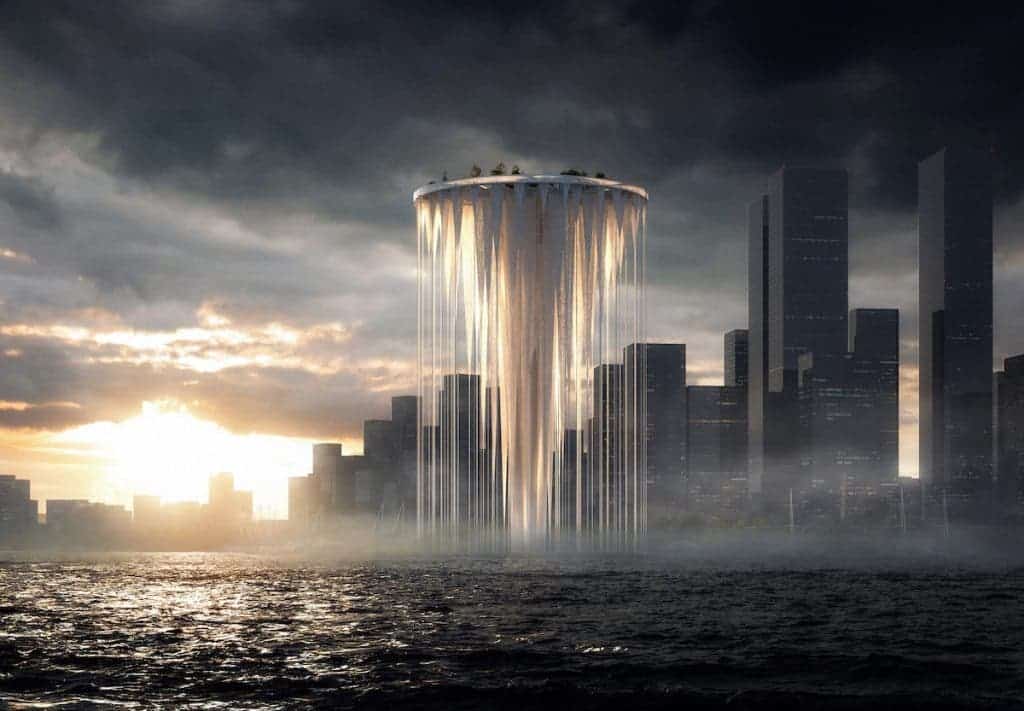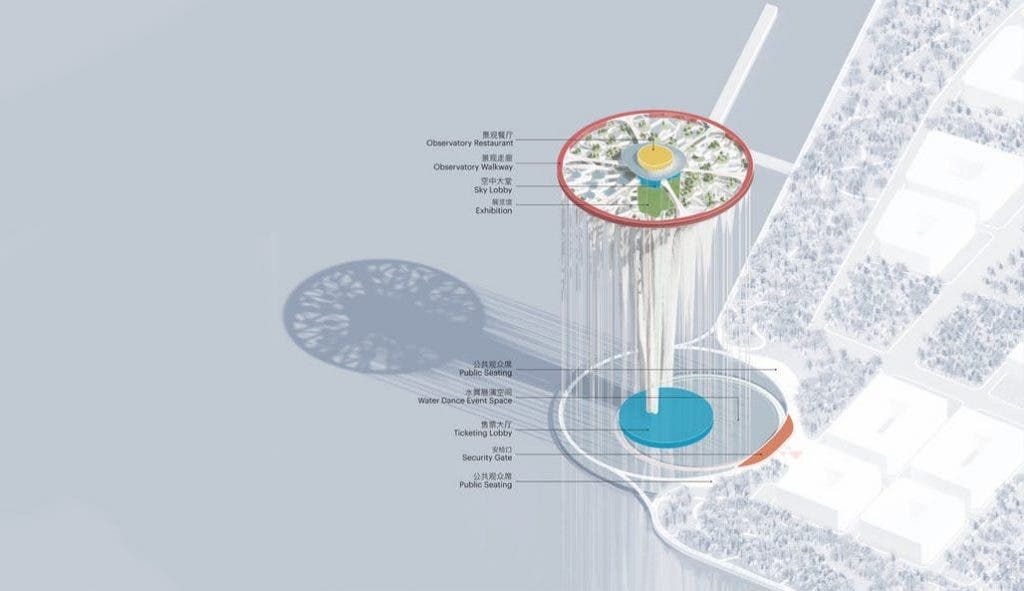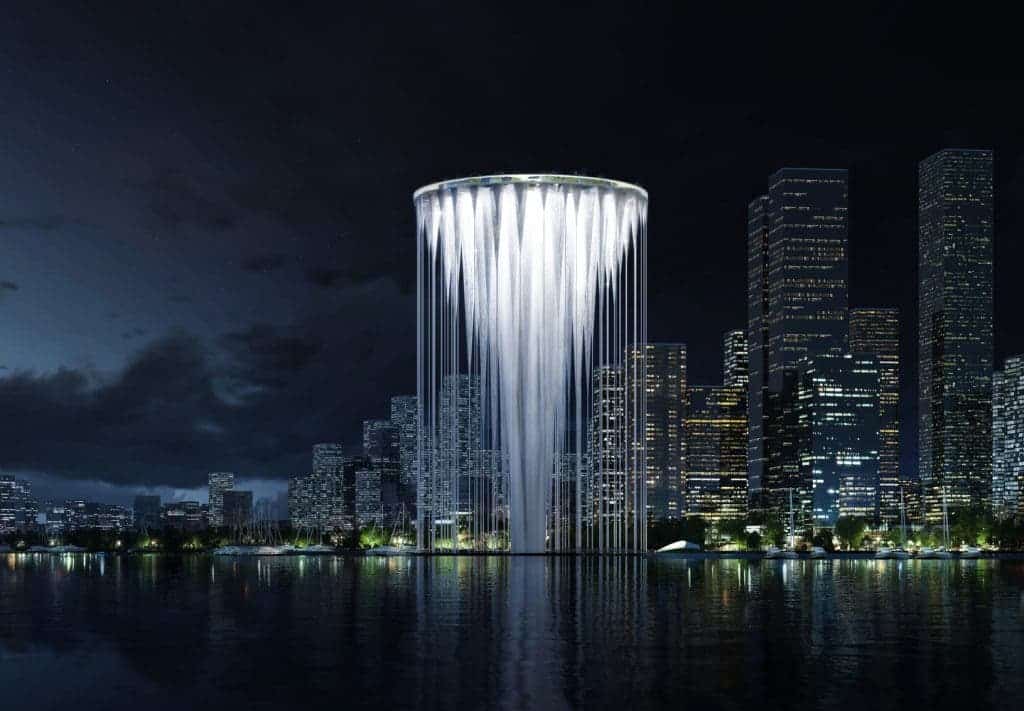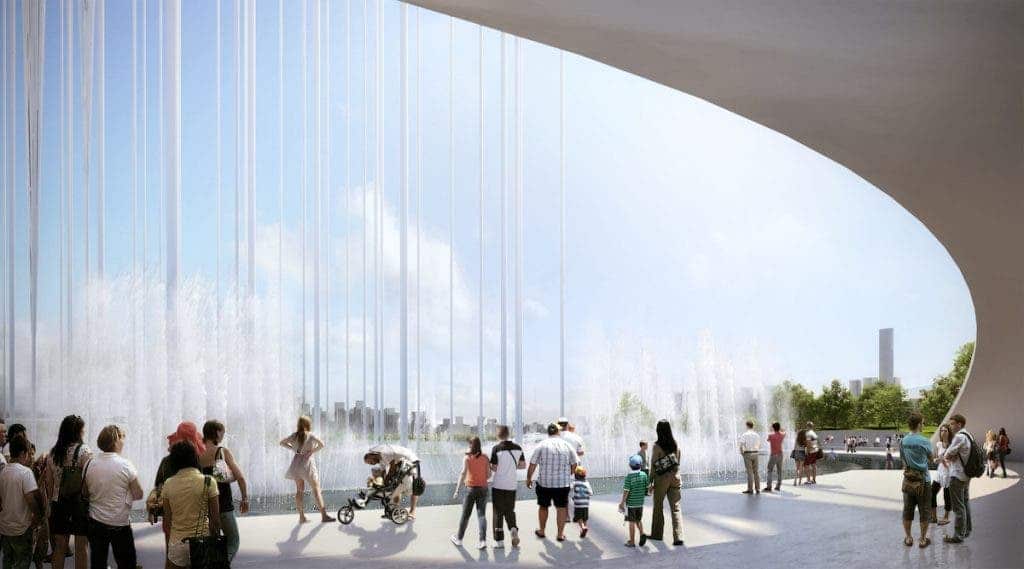How to create a spectacular landmark for a city’s skyline while also evolving the very idea of what makes a tower? Well, a group of architects have an idea. They want to build a new structure called the “ethereal tower” comprised of 99 floating islands in the massive Chinese city of Shenzhen.

Shenzhen is a coastal city in the south of Guangdong Province, just 41 kilometers from Hong Kong. Benefiting from its location, Shenzhen has grown dramatically in the past few decades, becoming a modern and international metropolis and is known as “China’s Silicon Valley”. It hosts major tech companies such as Huawei and Lenovo, as well as many emerging start-ups, and over 12 million people call it home.
With a massive skyline, Shenzhen is China’s fastest-growing city. It transformed from a small fishing town to a bustling megacity within decades. Every year, millions flock to its city center from around the globe seek to benefit from its investment-friendly practices, while tourists admire its futuristic landscape. Shenzhen trails only Shangai and Beijing in China for overall GDP. Now, the city wants something spectacular to show for all this growth.
Renowned Japanese architect Sou Fujimoto created a design for a massive floating tower on the bay of Shenzhen’s Qianhaiwan district. He pitched his idea at a competition that was set to address the questions of “What does a new ‘tower’ mean in the 21st Century?” and “How can a tower evolve while continuing to attract attention, as the Eiffel tower does?”
The proposed tower is 268 meters tall (880 feet) and would be made up of 99 individual tower-like pieces, joined by a strong horizontal place in the top section. The pieces gradually fade away as they descend, giving the impression that they are floating in the air. It’s simultaneously a single tower and a collection of towers, symbolizing the future of societies in the age of diversity.

The tower will be built mainly from steel, carbon fiber, concrete and Kevlar rope, with a peripherally located steel truss system with Kevlar tension cables maintaining the cores’ balance. A centralized core serves as the basis for the whole tower, which is joined together by outlying tension cables that resemble water flowing down to the bay.
A mirrored inverted frozen fountain will include an observation deck, exhibition area, restaurant, and cafe within the cables. The top deck is planned to be used for exhibitions, hoping to appeal to both visitors and locals as a social center where breathtaking views of the city and the bay can be viewed all around. It’s a design hoped to fit an evolving city.

This is hardly the first futuristic project proposed in Shenzhen — architects are flocking to the new metropolis, and the city’s skyline is already starting to show its status. However, as amazing as it may look, it’s still not clear whether the construction will actually green-lighted. If it does though, it will be a sight to behold.





